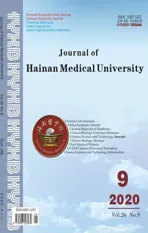The prevalence of depression among students in Chinese universities over the past decade: A meta-analysis
2020-07-10MiYuanWangJiaLiuXinWuLeiLiXiaoDiHaoQingShenMinTingHuangRuiHuaSun
Mi-Yuan Wang, Jia Liu, Xin Wu, Lei Li, Xiao-Di Hao, Qing Shen, Min-Ting Huang, Rui-Hua Sun
1. School of Management, Beijing University of Traditional Chinese Medicine, Beijing 100029 2. Dongzhimen Hospital, Beijing University of Traditional Chinese Medicine, Beijing 100700 3. Project and data management platform, China-Japan Friendship Hospital
Keywords:Students Depression Prevalence Meta-analysis
ABSTRACT Objective: Morbidity rate of depression among students in Chinese universities over the pass 10 years was evaluated to reveal the prevalence of depression within the group. Providing reference for future implement of anti-depression measures in universities. Methods: Multiple electronic databases were searched including Pubmed, Ebase, the Cochcrane Library, Chinese National Knowledge Infrastructure, Wanfang Database, Weipu Database. Cross sectional studies reporting on the prevalence of depression among students in Chinese universities were included. The extracted data was then Meta analyzed by R.3.6.1 software. Results: 37 validated studies with a total sample of 52,622 participants were covered. The prevalence of depression among students in Chinese universities over the pass 10 years ranged within 8.00%-74%. The pooled morbidity rate by random-effects model was 31.38% (95%Cl=26.31%, 36.44%). Subgroup analysis implicated the research outcome is influenced by gender, region, grade, place of birth and the quality of the study. Conclusion: An increasing tendency of the prevalence of depression among students in Chinese universities over the pass 10 years was concluded, Greater awareness was suggested to universities considering the psychiatric health of students.
1. Introduction
Depression is a kind of mood disorder characterized by significant and persistent depression, loss of interest and loss of pleasure. It has the characteristics of high incidence, high recurrence rate, high suicide rate and high disability rate. It not only brings great pain to the patient's body and mind, but also causes a heavy burden to the patient's family and society[1]. In recent years, the incidence of depression has increased year by year, and its impact on society has gradually increased. It has become one of the major public health problems in the world. According to the prediction of the World Health Organization (WHO), depression will become the second leading cause of premature death and disability by 2020[2]. Due to the change of living environment and excessive learning pressure[3], the incidence of depression is high among college students, and it has become one of the main factors affecting college students' mental health. the harm caused by depression to the healthy growth of college students can not be underestimated. Mild and moderate depression will significantly affect the daily life and psychological adjustment ability of college students, and extreme situations may also lead to a higher risk of suicide.
Since 2009, college students' depression has been widely concerned by scholars and practitioners [4,5]. Many studies on depression screening for college population have been carried out in China, but the results are inconsistent, and most of the studies are affected by sample size and confounding factors. In China, there has not been a systematic review of the prevalence of depression among college students, and the research results have not been combined through quantitative analysis. By using the methods of systematic review and Meta analysis, this study intends to estimate the prevalence of depression among Chinese college students, in order to reveal the epidemic trend of depression among Chinese college students and to provide a reference basis for the prevention and control of depression in college students in the future.
2.Materials and methods
2.1 Data sources
Cross-sectional study on the prevalence of depression among Chinese college students was searched in PubMed, Embase, Cochrane library, China National Knowledge Infrastructure (CNKI), Wan fang electronic databases and VIP journal database (VIP). Additionally, reference lists of the selected studies and previous review articles were also checked to identify additional studies. The search period is from January 1, 2009 to August 1, 2019.
2.2 Search strategy
The search strategy followed the Preferred Reporting Items for Systematic reviews and Meta-analysis (PRISMA) guidelines without date limitation. Reviewers independently searched the articles using the following search terms (“depression” [Mesh] OR “depressive disorder” [Mesh] OR “mental health” [Mesh]) AND (“college student” [Mesh] OR “university student” [Mesh]) AND (“China” [Mesh] OR “Chinese” [Mesh]) AND (“Cross-sectional Study” [Mesh]).There was no language limitation.

Figure1: PubMed Search strategy
2.3 Inclusion criteria for study selection
Inclusion criteria: 1) the type of study must be an epidemiological cross-sectional study on depression among college students published at home and abroad from 2009 to 2019; 2) there are clear criteria for defining depression, and depression in this study refers to depression, that is, those who are positive are judged according to the threshold value of the screening scale; 3) the sample size is at least 300; and 4) the original data are complete and the prevalence data of depression can be extracted. Exclusion criteria: 1) literature with poor quality and unavailable original data; 2) stress research in emergency and special cases (such as earthquake and influenza); 3) discrepancy between content and topic, such as reviews, reviews, reports, and 4) languages other than Chinese and English.
2.4 Data extraction and management
Two independent reviewers will extract the data of interest from the eligible study and fill in the data collection sheet. When there is no consensus on data extraction through discussion, the third reviewer will make a decision. Microsoft Excel 2013 will be used for data and information management. We will extract the following data:
1.The basic characteristics of RCT: title, 1st author, publishing year, the journal, province, region, sample size, diagnostic tools.
2.Participants characteristics: Age, sex, school type, grade, place of origin.
3.outcome: Prevalence rate (male and female).
2.5 Assessment for Risk of Bias
According to the list of cross-sectional quality evaluation issued by (AHRQ) of Healthcare Research and quality Bureau [6], there are 11 items in total. If the answer to the list is "no" or "unclear", it will be scored as 0 and 1 as "yes". 0-3 were low quality literatures, 4 -7 were medium quality literatures, and 8-11 were high quality literatures.
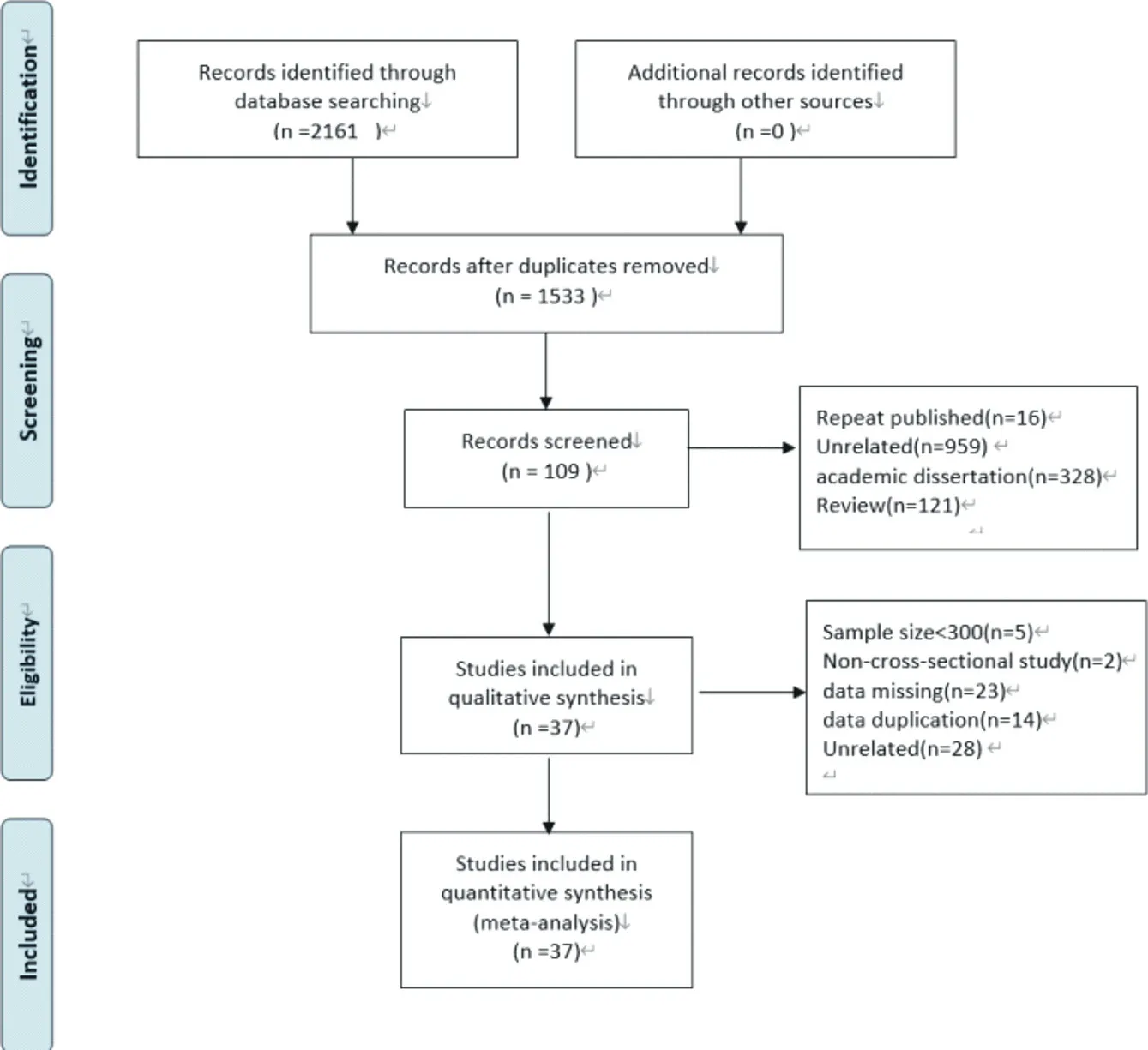
Figure2: literature screening on the prevalence of depression among Chinese college students
2.6 Statistical analysis
R3.6.1 software was used for statistical analysis. First, heterogeneity test was conducted on the included literature. P≥0.1 and I2<50% indicated no significant statistical heterogeneity, and the fixed effect model was adopted. P < 0.1, I2 50%, indicating statistical heterogeneity, random effect model was selected for merger analysis. Subgroup analysis was used to explore the sources of heterogeneity. Publication bias was evaluated by funnel plot and egger test.
3.Result
3.1 Study description
2161 articles were obtained in the initial examination. After title abstract screening and full-text screening, 37 [7-43] articles were included, all of which were cross-sectional studies, including 29 Chinese literatures [7-35] and 8 English literatures [36-43]. The total sample size was 52622, and a total of 14908 patients with depression were detected. 24 articles [7, 8, 11, 12, 14, 16-18, 20, 21, 23, 24, 27-33, 38, 40-43] reported gender details, 16,408 male students, 4,430 of whom were diagnosed with depression; There were 20,657 girls, 5,399 of whom were diagnosed with depression. 29 articles reported the distribution of the survey area, of which 15 [8, 11, 12, 14, 16, 20, 23, 24, 26, 28-30, 34-36] were investigated in the north, and 14 [10, 18, 21, 22, 25, 31, 33, 37-43] were investigated in the south. Of the 37 articles, 17 [7, 9, 15, 18, 20, 23, 24, 28, 32-34, 36-39, 41, 42] were investigated in medical schools, and 20 [8, 10-14, 16, 17, 19, 21, 22, 25-27, 29-31, 35, 40, 43] were
investigated in non-medical schools. A total of 37 articles involved 10 diagnostic tools: 1 [37] adopted the ADI scale, 7 [13,23,28,29,33,34,41] used the BDI scale, 8 [17,22,27,31,32,36,42,43] adopted the CES-D scale, 1 [38] used the DASS21 scale, 2 [8,40] adopted the PHQ- 9 scale, 1 [11] adopted the SAS scale, 1 [35] adopted the SCL-90, scale. 1 [25] adopted SDI-13,14 [7, 9, 10, 12, 14-16, 18 -21, 24, 26, 30] using SDS scale, and 1 [39] adopted TDQ scale. AHRQ scale was used to evaluate the quality of literature. the results showed that 4 articles [10,15,19,20] had a score of 3, which belonged to low-quality literature, while the remaining 33 articles were all medium-quality literatures. See tables 1 and 2 for details.
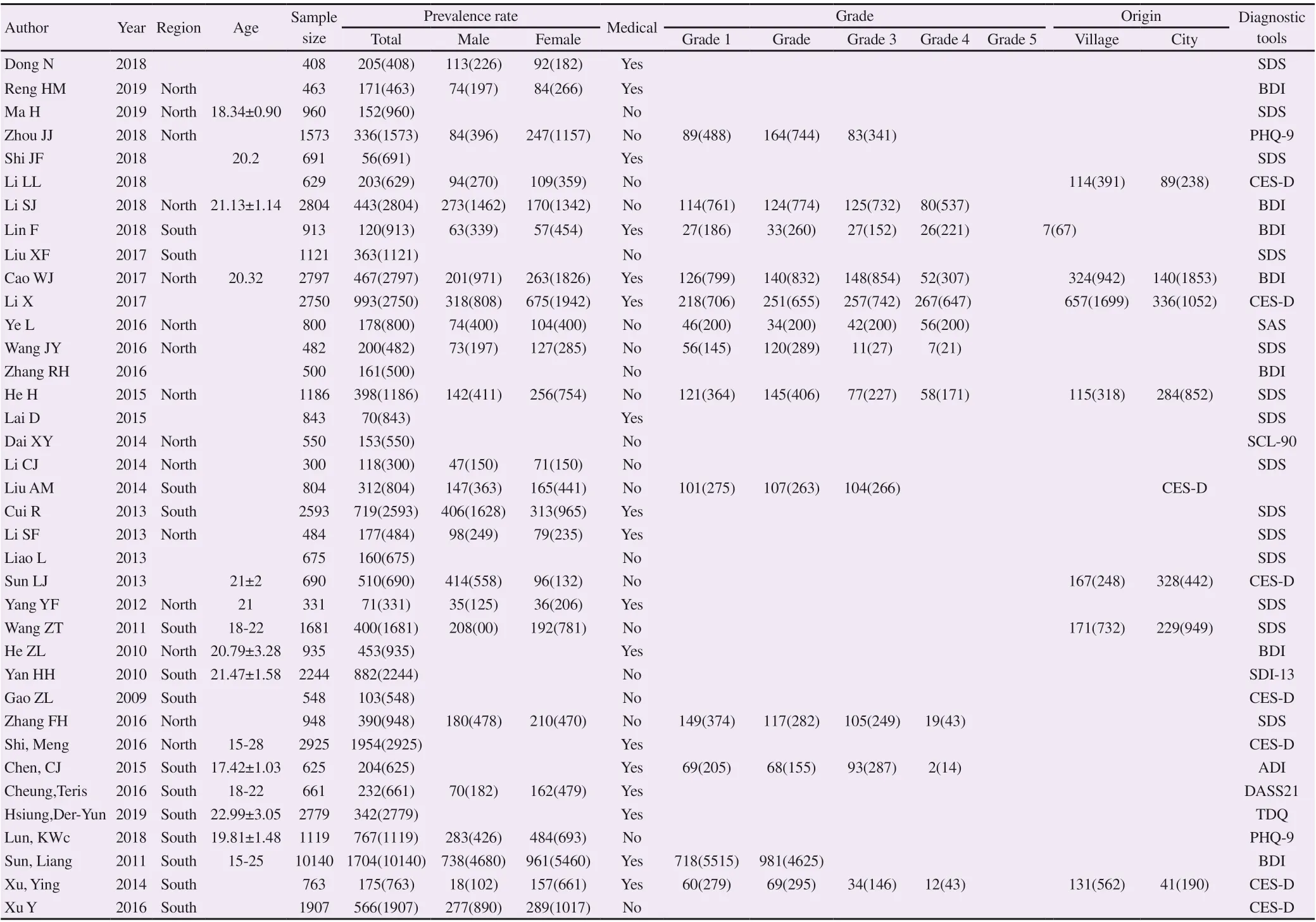
Table 1 Basic characteristics of literature on prevalence of depression among Chinese college students
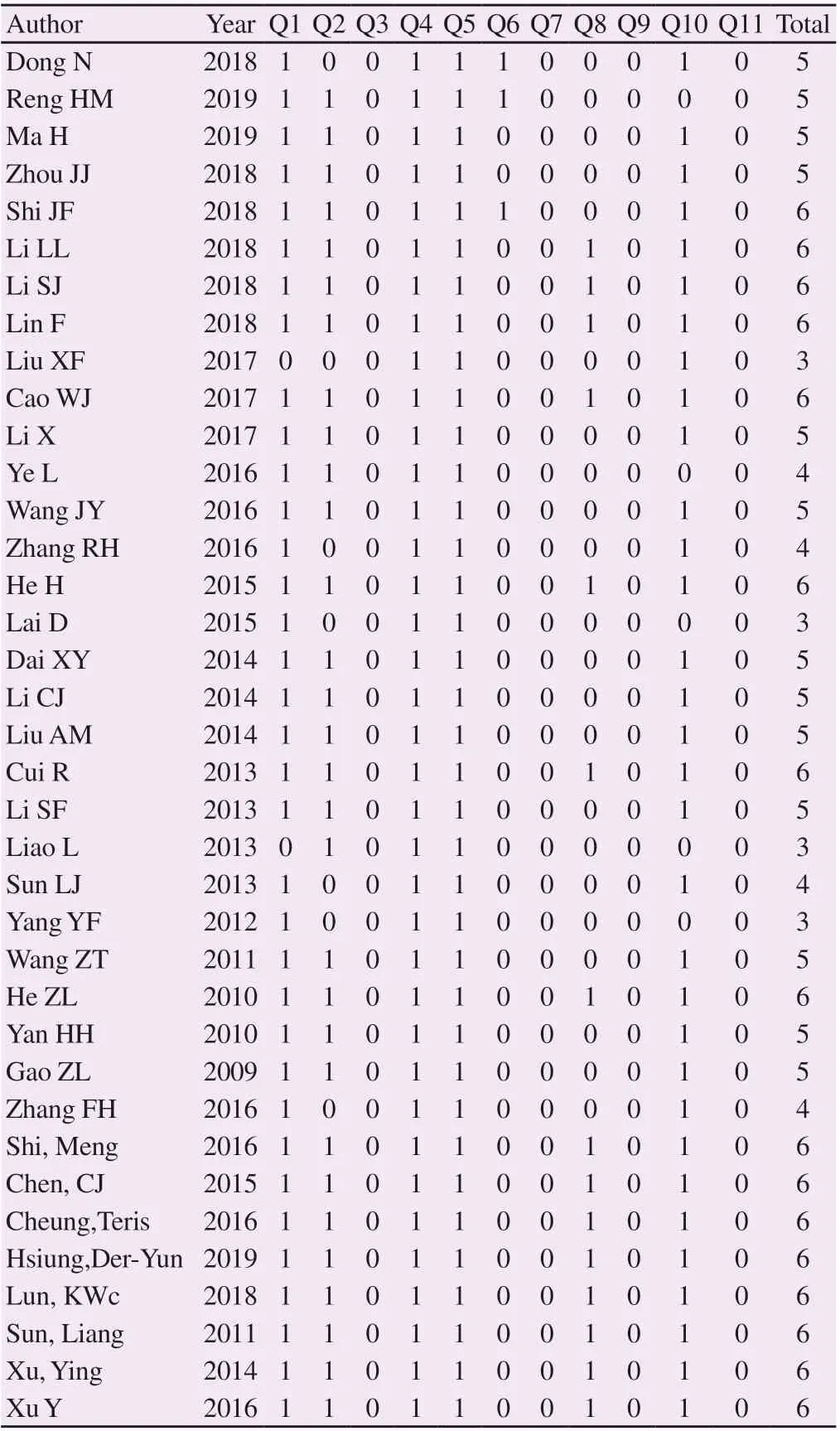
Table 2 Quality evaluation table of literature on prevalence of depression among Chinese college students
3.2.1 Prevalence of depression
The results of 37 studies on the prevalence of depression among Chinese college students are between 8.00% and 74%. The heterogeneity test was carried out on the results of 37 studies, and the results showed that H=14.21, tau^2=0.02,I2=99.50%,indicating that there was a high degree of heterogeneity, so the random effect model was selected for Meta analysis. Using the random effect model, the prevalence rate after the merger was 31.38% ,95% CI (26.31%,36.44%). The forest plot is shown in figure 3.
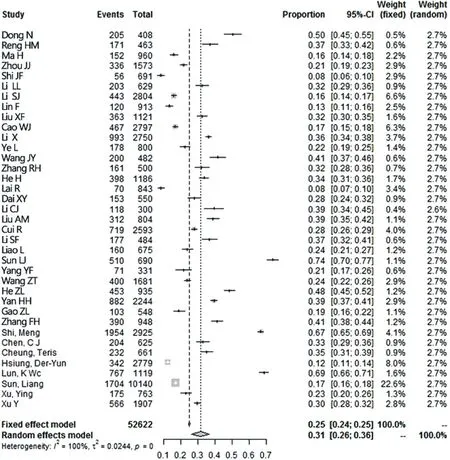
Figure3:forest plot of prevalence of depression among Chinese college students
3.2.2 Subgroup analysis
The results of subgroup analysis show that since 2009, The incidence of depression in Chinese college students is higher in male students (33.27%) than in female students (32.94%).The prevalence
3.2 Results of meta-analysis

Table 3 Subgroup analysis of prevalence of depression among Chinese college students
rate of depression in colleges and universities in the north (32.35%) is higher than that in colleges and universities in the south (29.38%). The larger the sample size (27.84%), the lower the prevalence rate of depression; the prevalence rate of depression among freshmen in four grades (26.02%) was the lowest. The prevalence rate of depression among college students in rural areas (35.87%) was higher than that in urban areas (32.85%). The prevalence rate of depression in low-quality literature (21.44%) was lower than that in high-quality literature (32.58%). See Table 3 for details.
3.2.3 Sensitivity analysis
The sensitivity of the 37 included literatures was analyzed by excluding the data one by one. The results showed that the prevalence of depression among Chinese college students was stable at 31.38%, indicating that the results of this meta-analysis were stable. See table 4 for details.
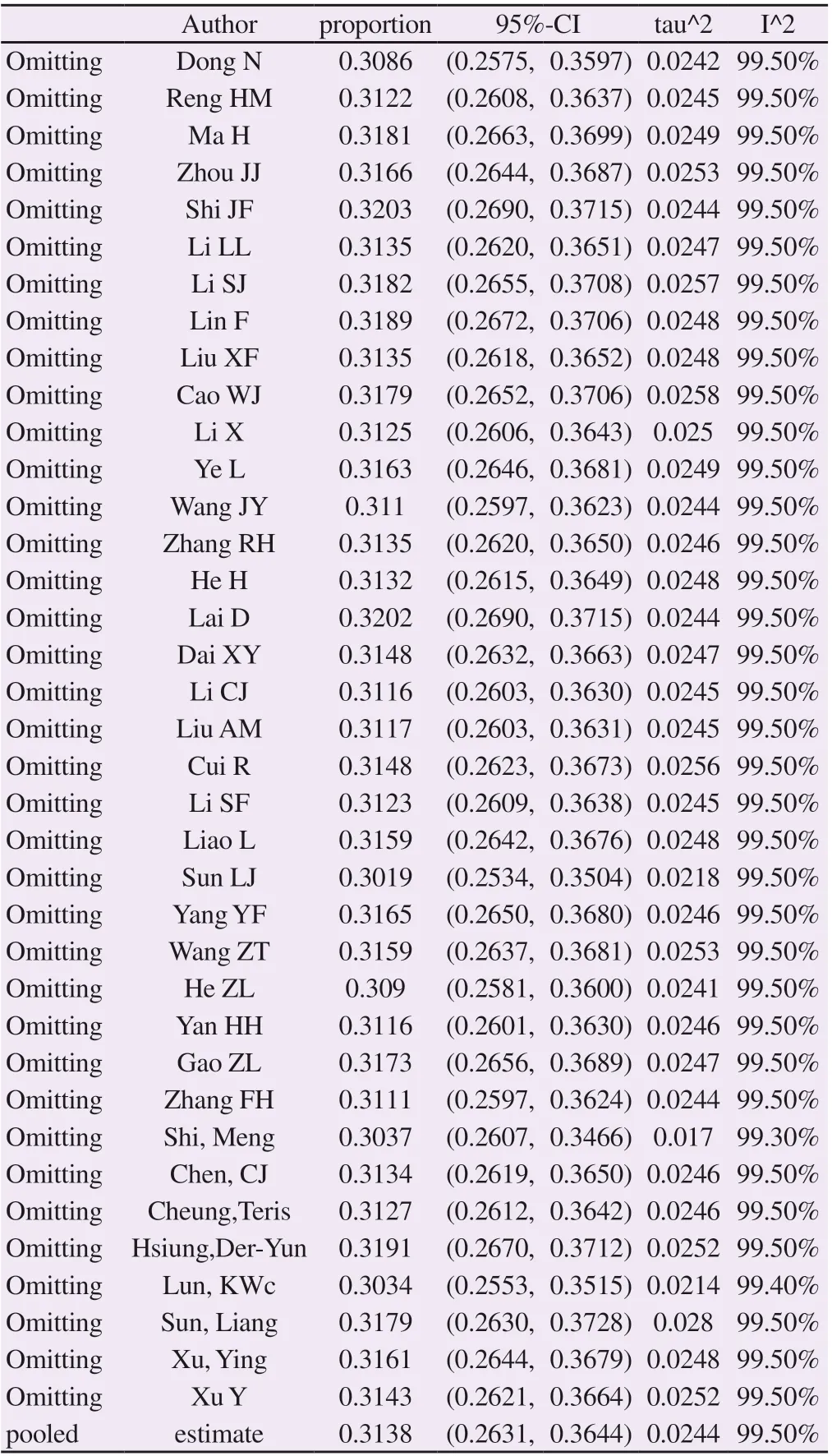
Table 4 Sensitivity analysis of prevalence of depression among Chinese college students
3.2.4 Assessment of reporting biases
Egger test method and funnel plot were used to test whether there was publication bias among the studies. Through the quantitative analysis of egger test method, the results showed that there was publication bias (P<0.01), and the distribution of each study in the funnel plot also showed the existence of publication bias. The results are detailed in figure 4.

Figure4:Funnel plot of susceptibility of depression prevalence among Chinese college students
4.Discussion
This study includes 37 articles and uses Meta analysis to find that the prevalence rate of depression among college students in the past ten years is 31.38%, which is slightly higher than that of Tang H[44] and others. It may be the acceleration of socio-economic development and knowledge replacement, which brings greater psychological pressure to college students. The quality-stress theory of depression is a classical theoretical framework for the study of depression. according to the quality-stress theory, the incidence of depression among college students is higher than that of the general population, which may be caused by many reasons. First of all, personality factors. Nouri et al found that people with higher scores of neuroticism have an increased risk of depression [45]. Neuroticism is a dimension that reflects the stability of personality. Due to psychological immaturity, the personality stability of college students is often poor. Secondly, high dependence and lack of social experience lead to varying degrees of problems in attribution and coping styles of college students. Due to the improvement of economic conditions, the family growth environment of contemporary college students is better, and enjoying the care of their parents at home often means high dependence and lack of social experience, which further magnifies other problems in college students' life. such as poor ability to bear setbacks, unfamiliarity in dealing with people, alienation of interpersonal relationships, etc., increase the risk of depression. In addition, with the increase in the number of college enrollment and the change of the employment situation, college students are facing greater employment pressure, and the trouble of "graduation is unemployment" perplexes the group of college students. Finally, the pressure of study brought by heavy study and examination and the pressure of life brought by the maintenance of interpersonal relationship may aggravate the depression of college students to some extent.
The results of subgroup analysis show that in terms of gender, the prevalence rate of depression in males of Chinese college students is higher than that of females in the past ten years, which is consistent with the results of previous studies [18,46]. This may be due to the severe employment situation of Chinese college students. the traditional family model concept of "women dominate the inside and men dominate the outside" brings more psychological pressure to male college students than female college students. In terms of region, the prevalence rate of depression in colleges and universities in the north is higher than that in the south, which may be due to factors such as geographical environment and cultural environment. The results show that there is less sunshine in the north than in the south. It makes people more likely to feel anxious and depressed [47]. In terms of the origin of students, the prevalence rate of depression among students in rural areas is higher than that in urban areas, and one of the important reasons may come from the economic situation [48]. The poor economic situation of rural college students will make them prone to inferiority and sensitive. Secondly, college students in rural areas need to adapt to greater changes in the living environment than students in urban areas, and the huge differences between rural and urban areas will also make it more difficult for college students from rural areas to adapt. In terms of grade distribution, the prevalence rate of depression among freshmen in the four grades is the lowest, which may be due to the fact that higher-grade students face more academic and life stress than lower-grade students. Trivial life events may lead to a higher incidence of depression.
In this study, Meta analysis was used to combine the results of an epidemiological cross-sectional study on depression among Chinese college students. To some extent, the results revealed the epidemic trend of depression among college students in China. But at the same time, there are the following shortcomings: 1) the heterogeneity of this study is large, which will have a certain impact on the results, so the research on the prevalence rate of Chinese college students in the past decade needs to be further explored. 2) Depression in this study refers to depression emotion, that is, people who are positive are judged according to the threshold value of the screening scale, and the results obtained in this way will be larger than the actual situation. 3) through egger tese test and funnel plot, we can find that there is a certain publication bias in the included literature, which will affect the research results.
To sum up, through Meta analysis, it is concluded that the prevalence rate of depression among Chinese college students in the past decade is 31.38%, and there is a rising trend. Colleges and universities need to pay more attention to the mental health problems of college students. Although there are some shortcomings in this study, it still has a certain reference value for the results. In the future, with the increase of high-quality cross-sectional research, it can be re-evaluated.
杂志排行
Journal of Hainan Medical College的其它文章
- Effects of virtual reality balance games combined with muscle strength training on balance function and motor ability of Parkinson's patients
- Epidemiological characteristics of 168 cases of COVID-19 in Hainan Island, tropical China: A descriptive study
- Survey and analysis of anxiety of 804 residents in Hainan during the COVID-19 epidemic
- Analysis of treatment strategies of traditional Chinese medicine for COVID-19 in tropical regions based on the pathogens of dampness and heat
- Evaluation of hepatic fibrosis parameter model and elastic modulus of liver and spleen for the diagnosis of hepatic fibrosis in chronic hepatitis b
- Effect of aripiprazole and olanzapine on the cognitive function in patients with schizophrenia
